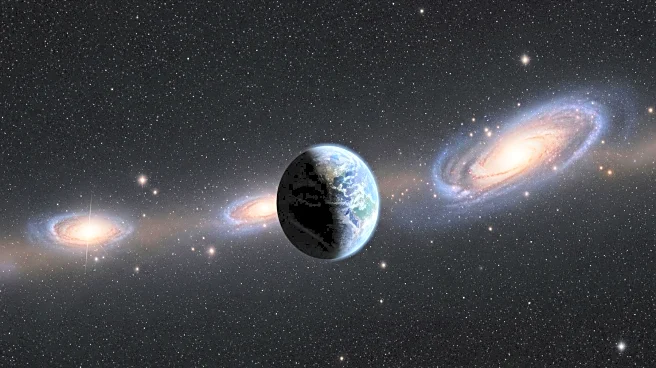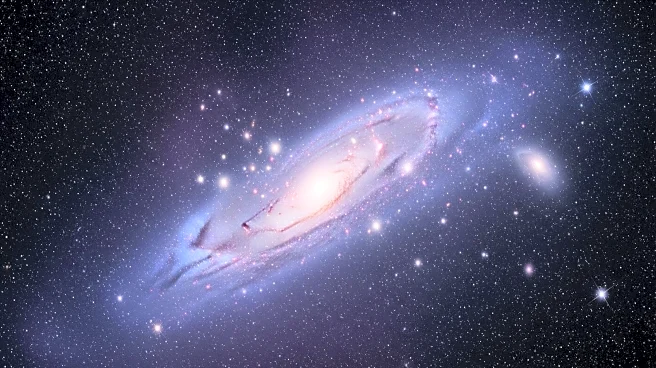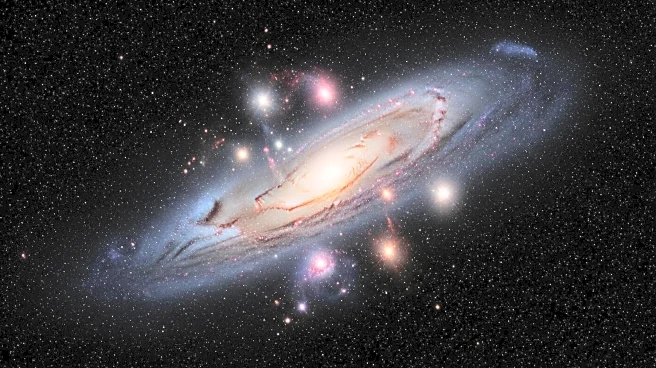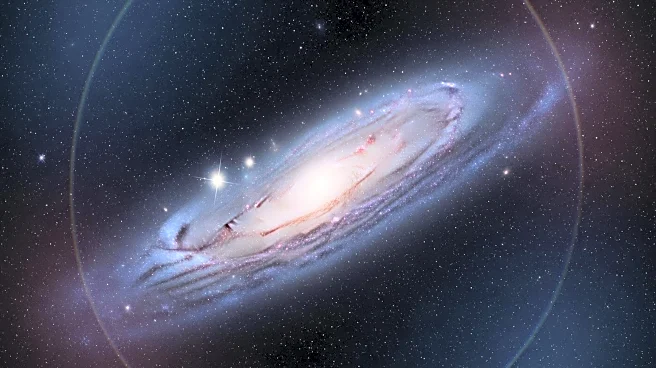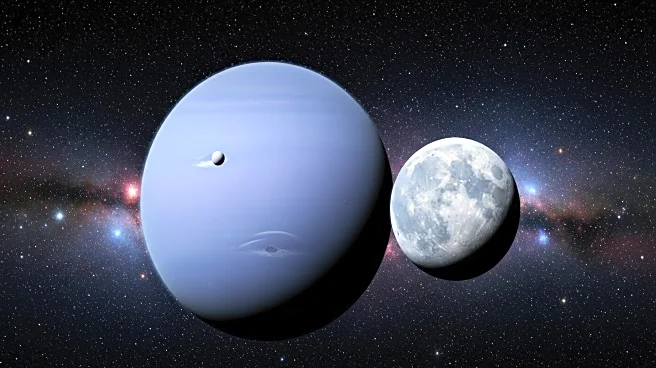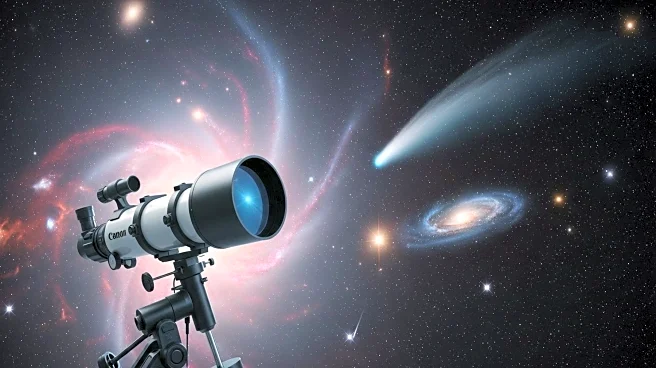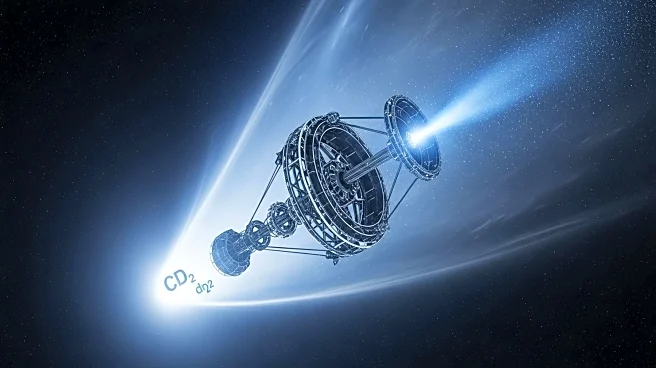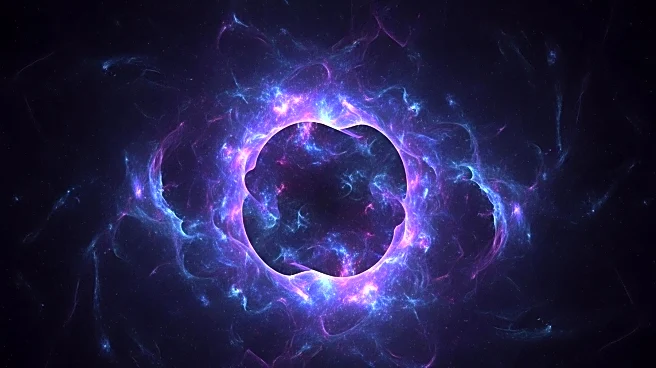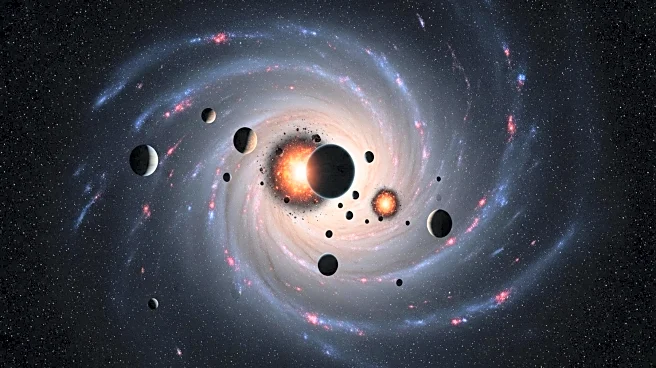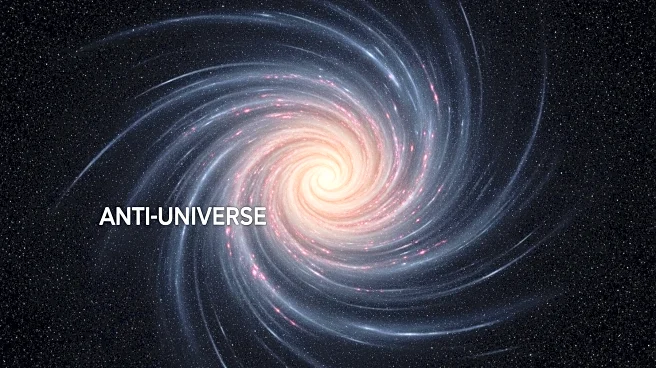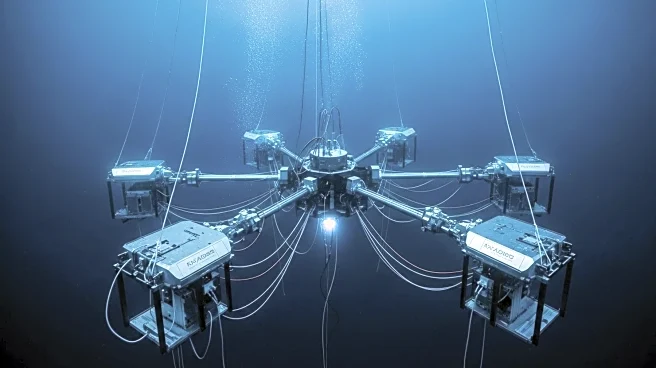What's Happening?
Recent data on baryon acoustic oscillations (BAOs) suggest that Earth may be located within a vast cosmic void, with a matter density around 20% lower than the cosmic average. This finding offers a potential solution to the Hubble tension, a discrepancy in the measured expansion rate of the universe. The study, published in the Monthly Notices of the Royal Astronomical Society, analyzed distorted sounds from the early universe to support the void hypothesis, which could explain the faster-than-expected local expansion rate.
Why It's Important?
The concept of a cosmic void could significantly impact our understanding of the universe's structure and expansion. Solving the Hubble tension is crucial for refining cosmological models and improving predictions about the universe's future. If confirmed, the void hypothesis could reshape theories about cosmic evolution and the distribution of matter in the universe, influencing both theoretical and observational astrophysics.
What's Next?
Further research and more accurate BAO measurements at low redshift are needed to confirm the void hypothesis. These studies will help determine the expansion rates and provide insights into the universe's large-scale structure. Continued exploration of the Hubble tension will be essential for advancing cosmological theories and understanding the universe's dynamics.
